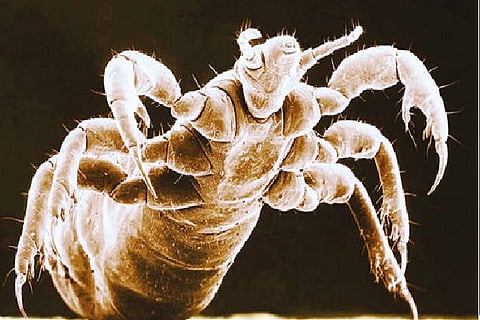

Washington
The urge to gag or vomit is “well-suited” to defend ourselves against things we swallow that might contain pathogens, according to Tom Kupfer, a psychological scientist at Nottingham Trent University in England. But vomiting is somewhat futile against a tick, an ectoparasite that latches on to skin, not stomachs.
In an experiment that produced both stomach churning and skin crawling sensations I can confirm these and some other physiological responses firsthand Dr. Kupfer and Daniel Fessler, an evolutionary anthropologist from the University of California, Los Angeles, argue in a paper published on Wednesday in the journal Proceedings of the Royal Society B that humans have evolved to defend themselves against ectoparasites through a skin response that elicits scratching.
Although some outside experts say more research is needed, the findings align with some understandings of the evolution of disgust. “It makes sense to have developed adaptive defensive strategies against the ‘nasty’ ones,” Cécile Sarabian, a cognitive ecologist studying animal disgust at the Kyoto University Primate Research Institute in Japan, said.
The disgusting investigation began in 2017 on the grounds of Chicheley Hall in Buckinghamshire, England. Here, Dr. Kupfer was presenting findings to colleagues on trypophobia, the aversion to clustered holes experienced by some people. His data showed that participants with trypophobia often reacted to holey images with the urge to itch or scratch, sometimes to the point of bleeding. Dr. Kupfer suggested that trypophobia might not represent fear, but rather a disgust reaction to signs of parasites or infectious diseases, which can both result in clusters of lesions or pustules. Dr. Kupfer’s presentation included images that typically set off trypophobic reactions, like lotus seed pods or foam bubbles. At one point during the presentation, a distressed researcher in the front row began shouting for Dr. Kupfer to take an image down.
When one hole closes, another opens. Dr. Fessler approached Dr. Kupfer after the presentation and the two researchers began talking about how the human body might have two types of defensive responses in reaction to certain threats. If nausea and vomiting protect against ingesting dangerous microbes, scratching might protect against ectoparasites. They then began working on a review paper that was published in 2018.
For the new paper, Dr. Kupfer and Dr. Fessler developed a study where they showed people a series of 90-second videos a suggestive medley of pathogens and ectoparasites and asked the participants about their emotional and physical response. The researchers plan to expand this project internationally to see how ectoparasite disgust responses vary in different countries and in different languages. Understanding the nuances of disgust, they say, could inform our understanding of disorders such as delusional parasitosis, the mistaken belief that parasites have invaded the body.
Imbler covers science for NYT
The New York Times
Visit news.dtnext.in to explore our interactive epaper!
Download the DT Next app for more exciting features!
Click here for iOS
Click here for Android